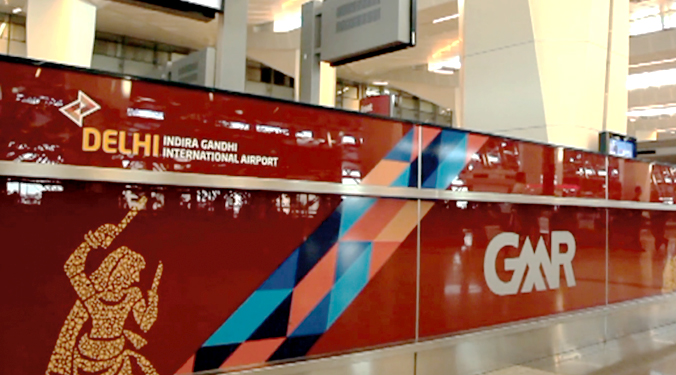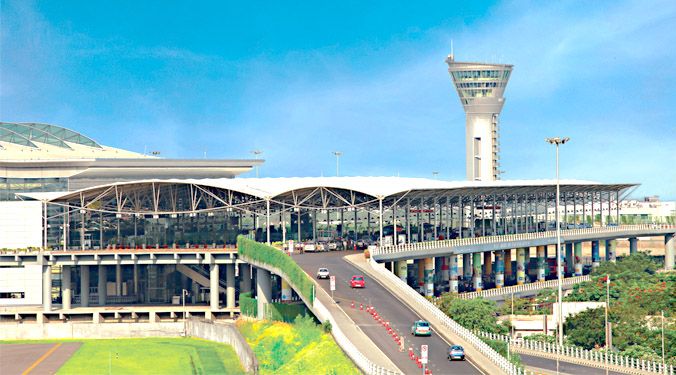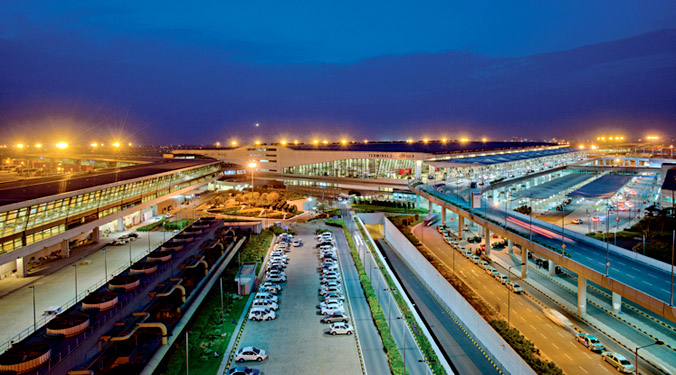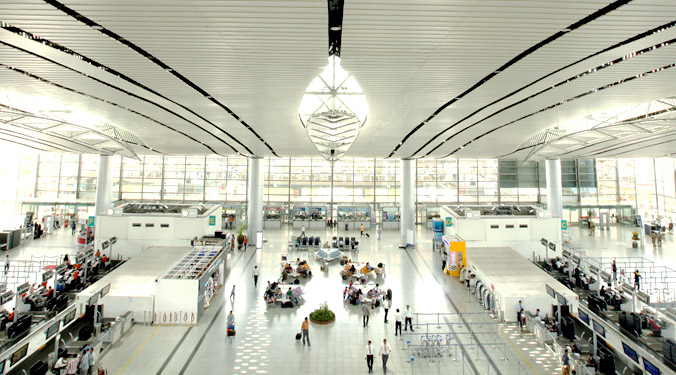IGIA and RGIA: Setting the benchmarks for sustainable airports

As India gets rapidly urbanised, the inception of newer airports is inevitable. These airports need to be green and sustainable in the long run. Such emerging airports can take a cue from existing airports which have been certified as green and sustainable.

Green certifications for Indira Gandhi International Airport (IGIA) Terminal 3, New Delhi IGIA Terminal 3 has four distinctions to its credit: being the first airport in India to achieve a Gold rating under the LEED New Construction (NC) rating system of being the first airport in the world to achieve a Platinum rating under LEED Operations & Maintenance (O+M) performance pathway. Terminal 3 has a gross floor area of 550,000 sq mts.
Terminal 1 of IGIA has received LEED Platinum pre-certification. The airport uses 100% renewable energy through its onsite solar (7.84 MW) and offsite hydropower plant. It has also incorporated green taxiing solutions (TaxiBot with multimodal connectivity) and is working towards Net Zero Emission by 2030. The gross floor area of Terminal 1 is 192,985 sq m.
Green certifications for Rajiv Gandhi International Airport (RGIA), Hyderabad

RGIA was the first airport in Asia to achieve green building certification under any version of LEED. It is a Silver-rated building with a 10 MW onsite solar power plant to meet its energy needs. The terminal is currently being expanded and built as per LEED NC v4 requirements. The expansion project has received LEED Gold pre-certification. The airport has Carbon Accreditation Level 3+ (Neutrality) and is working towards Net Zero Emission by 2040. The airport has a gross floor area of 370,185 sq. m.
Strong focus on sustainability and responsible growth Environmental sustainability is our ticket to a safer future. It’s not a one-day task to be done once in a while but a collaborative and continuous process that can build the foundations for a more resilient and prosperous economy. Based on seven values and beliefs, GMR Group has always ensured that its businesses follow the path of responsible growth. Throughout the years of delivering several successful infrastructures worldwide, the group has kept environment sustenance at the core of its project plans. The Indira Gandhi International Airport (IGIA) and Rajiv Gandhi International Airport (RGIA), which GMR Group has designed, are well known for conducting operations in an environment-friendly and sustainable manner.
Green Zones at airports Right from the design and construction phase, IGIA and RGIA have ingrained environmental protection as an integral part of their business. Both airports have successfully maintained green buildings based on their respective ecological policies, developed with their stakeholders’ cooperation. While IGIA’s Terminal 3 has been recognised as the first LEED Gold Accredited airport terminal building in the world, RGIA was awarded the Silver LEED certification in 2008 by USGBC. Moreover, RGIA has a vast landscaped green cover of over 675 acres and a well-maintained greenbelt and extensive vegetation. This sprawling green cover is a natural sink of carbon emissions and absorbs about 240 tons of carbon dioxide from the environment annually.
Single-Use-Plastic-free Airports (SUPAs)

In line with their sustainability commitments, IGIA and RGIA focus on optimising the use of natural resources by conserving water, fuel, and electricity and adopting best practices in waste management and plastic reduction. Recently, in line with the Central Government’s ban on single-use plastic, both airports have adopted a zero-tolerance policy on its use. This policy covers all concessionaires and service providers operating at the airports.
Both the airports had already been steadily phasing out the use of non-recyclable plastic over the past few years. The campaign’s final phase now includes switching to sustainable, eco-friendly alternatives. The F&B outlets and airport retail stores are encouraged to use corn starch plates, wooden spoons and forks, and biodegradable boxes and covers. Furthermore, IGIA and RGIA have been encouraging the use of eco-friendly products such as jute bags through their corporate social responsibility arm GMR Varalakshmi Foundation.
Steps to improve carbon neutrality
Reducing carbon footprint has been one of the key focus areas in environment sustenance measures at GMR-led airports. To manage the environmental aspects better and reduce their impact on the environment, both IGIA and RGIA are adopting several administrative and engineering controls. This includes aircraft continuous descent approach while landing, restricted use of thrust reversal, and Fixed Electrical Ground Power (FEGP) for the aircraft turnaround operations instead of fuel-operated auxiliary power units (APUs) and ground power units (GPUs) to reduce noise. Steps such as introducing battery-operated vehicles in place of petroleum engine-driven vehicles, and regular pollution checks for the Ground Support Equipment (GSE), etc., have significantly contributed to reducing emission levels.

145
Cookie Consent
We use cookies to personalize your experience. By continuing to visit this website you agree to our Terms & Conditions, Privacy Policy and Cookie Policy.







